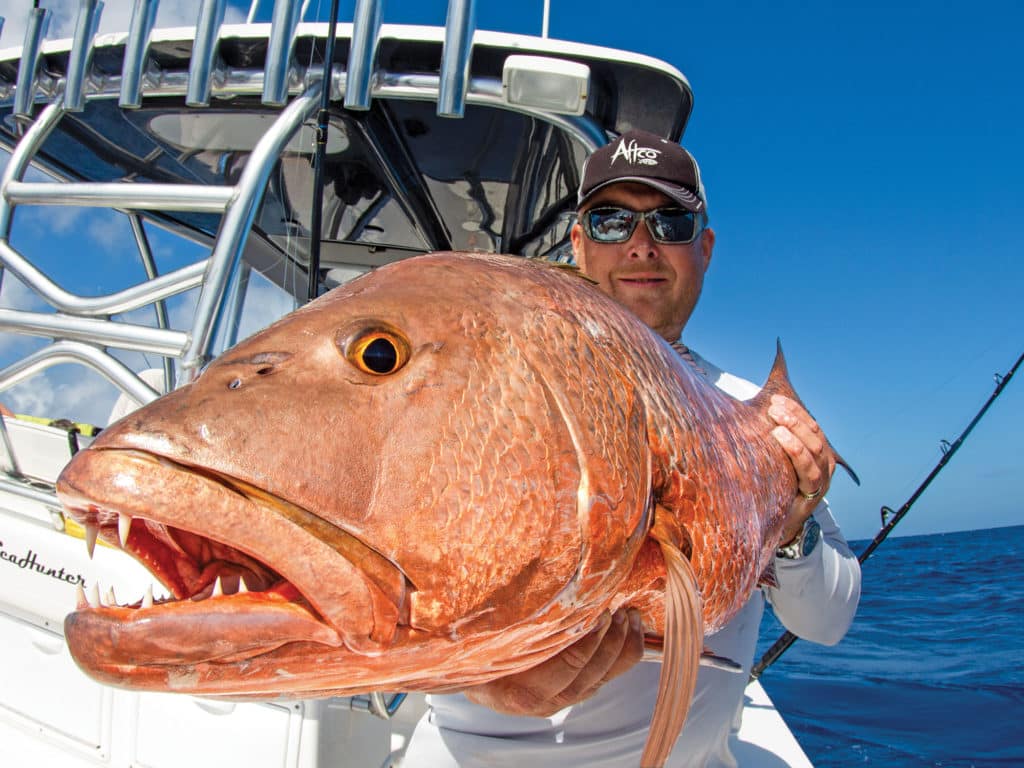
With more than 100 species known as snapper worldwide, it’s no surprise this group of saltwater fishes is highly sought after by anglers. Though most abundant in semi-tropical and tropical waters, some snappers also tolerate cooler water temperatures and are found in more-northern latitudes.
While this assemblage varies in size, color and biology, they share characteristics that define them as snapper: schooling fishes with elongated bodies, large mouths, and the canine teeth of predators. There are no vegetarians in the snapper world.
Just about anything that swims can make a meal. Older juvenile snapper eat amphipods, shrimp and other invertebrates, while adults of most species shift to a diet dominated by fish. Anglers use whole dead baits, live baits and lures that mimic prey to draw strikes.
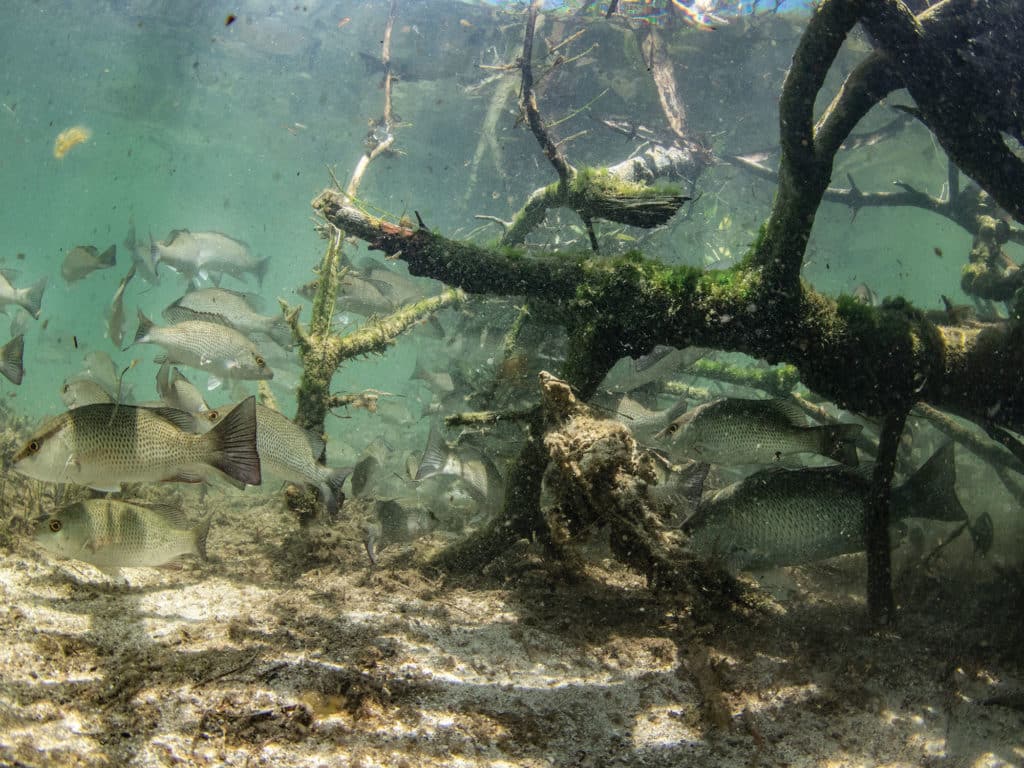
All snapper species are considered good to excellent table fare, the white, flaky flesh lending itself to a variety of preparations. For that reason, they’re targeted in mix-use fisheries—commercial and recreational—throughout their range. This tug of war for snapper makes for a management challenge as both sectors vie for the oftentimes small annual catch quotas.
Thanks to an abundance of suitable habitat and prey items, the waters of the South Atlantic Ocean and Gulf of Mexico teem with several species of snapper, each offering a unique angling and culinary experience. Here’s an introduction to the most popular snappers.
Yellowtail Snapper
Most abundant in South Florida, the Bahamas and the Caribbean, the yellowtail snapper is occasionally caught as far north as New England. Maximum documented age for the species is 28 years, and the all-tackle record is 11 pounds.
While yellowtails reach a double-digit weight, the 2- to 3-pound range is most common, with anything over 5 pounds considered a trophy, or “flag” in the parlance of Conch Republic anglers.
Easy to recognize with its distinctive yellow band from snout to tail, anglers find them wary and often use small hooks hidden in small dead baits or chunks drifted in chum. Target the largest yellowtails with live baits, like pilchards or ballyhoo over deeper reefs.
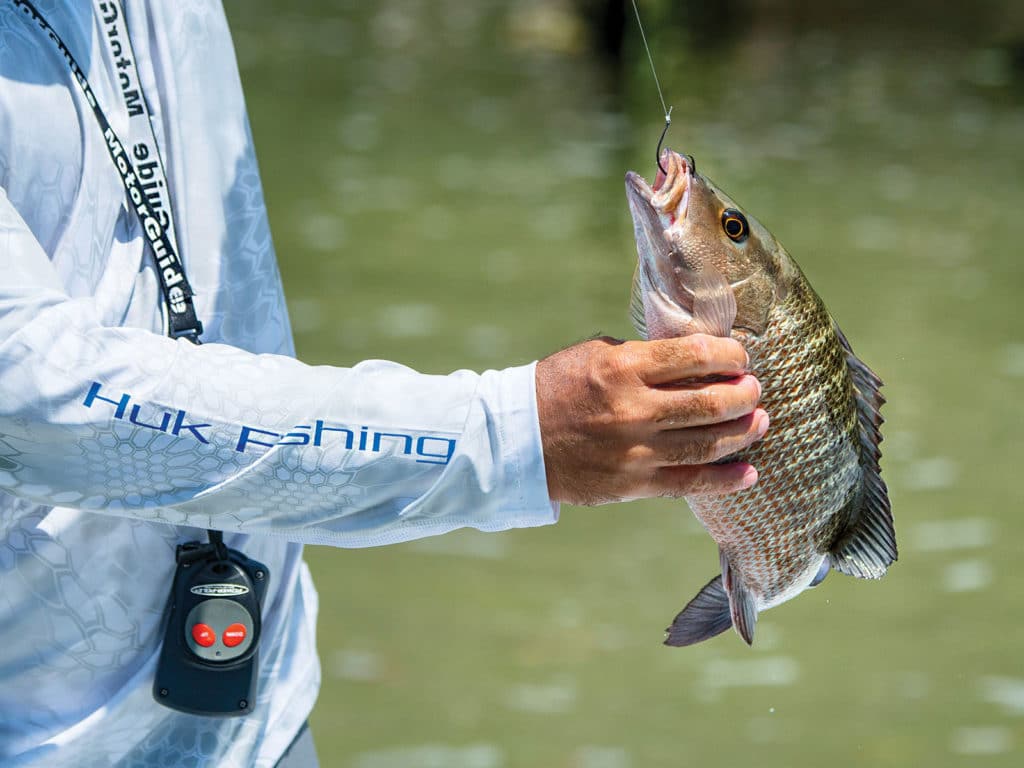
Gray Snapper
Also known as mangrove snapper or simply mangos, this species thrives throughout the year in the southern half of Florida, the Bahamas and the Caribbean, and can be caught throughout the Gulf and South Atlantic during the warmer months. The maximum observed age is 32 years, and the all-tackle record is 18 pounds, 10 ounces. Inshore mangroves average 1 to 2 pounds, with offshore fish tapping 10 pounds.
This species varies in color but is usually dark gray or brown on the upper part of the body, and orange or pinkish on the lower half. The tail is broad and slightly forked. Males and females are largely indistinguishable.
Growing up within inshore waters with an affinity for mangrove-lined shorelines and waterways, most gray snapper move to deeper waters and reefs as they mature. Occasionally, larger fish are caught in inlets and deeper structure within bays and estuaries.
While mangroves are bottom dwellers like most snapper species, they often form large schools at middepth and respond well to chumming. Chum helps excite the fish into a feeding frenzy, which somewhat negates their tendency to become skittish once several of their companions have been caught. Given their diverse diet, they can be taken on a variety of baits and lures, with live fish and shrimp being particularly effective.
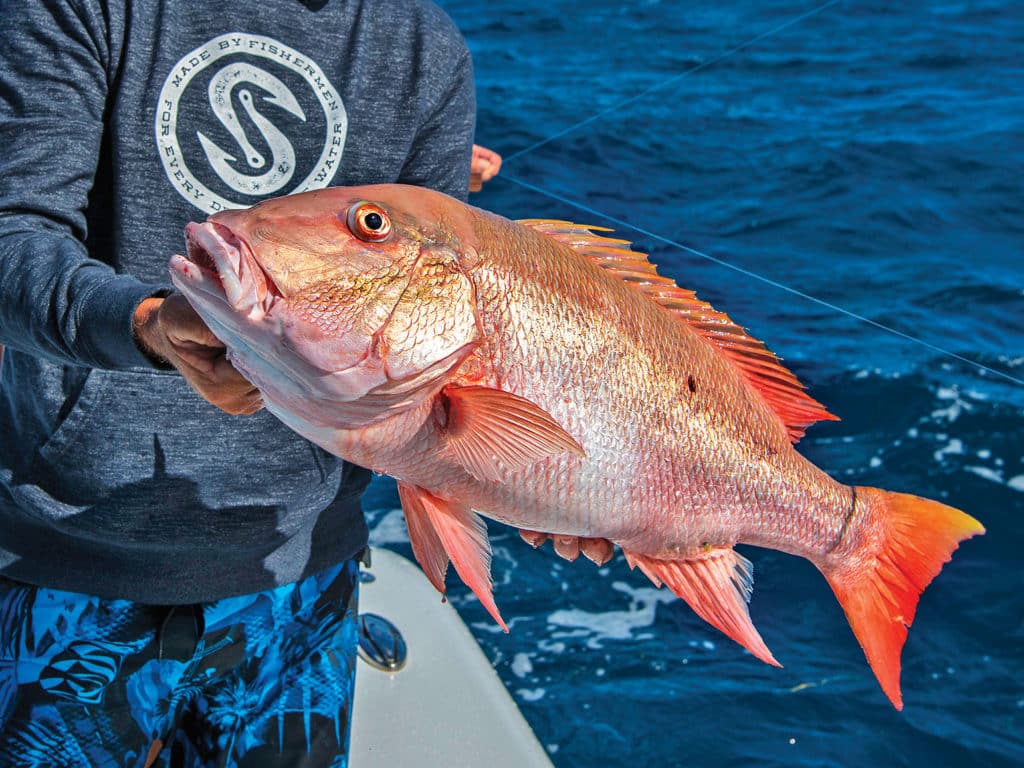
Mutton Snapper
This species can be found from Massachusetts south to Brazil, but is most abundant in Florida, the Gulf of Mexico, the Bahamas and the Caribbean. Maximum age is 40 years, and the all-tackle record is 30 pounds, 4 ounces, with fish in the 10- to 20-pound range fairly common.
Like most other snapper species, muttons are visually striking; their coloration ranges from orange to reddish yellow. They feature small blue streaks on their heads, backs and sides. Most noticeably, they sport a black spot above the lateral line and below the dorsal fin. Muttons are sometimes confused with lane snapper, which, although similar in appearance, have yellow streaks instead of blue streaks along the body.
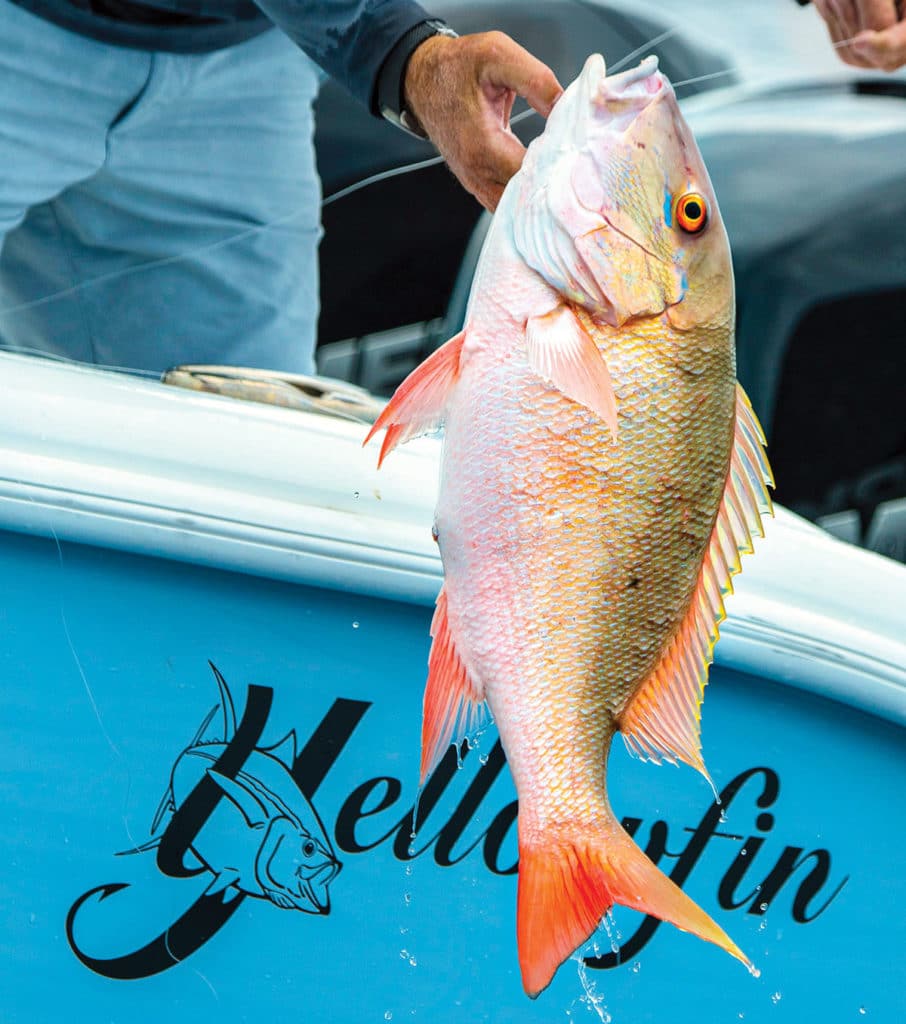
Mutton snapper gather annually in large, temporary aggregations to spawn in the same locations and times during the lunar cycle. Once spawning concludes, the fish disperse back to suitable habitats; juveniles come inshore, while adults typically head offshore in and around both natural and man-made bottom structure.
Unlike some snapper species, larger muttons are often solitary. Drift natural baits, either live or dead, on light tackle around the periphery of bottom structure to increase the odds of enticing a strike from these finicky eaters.
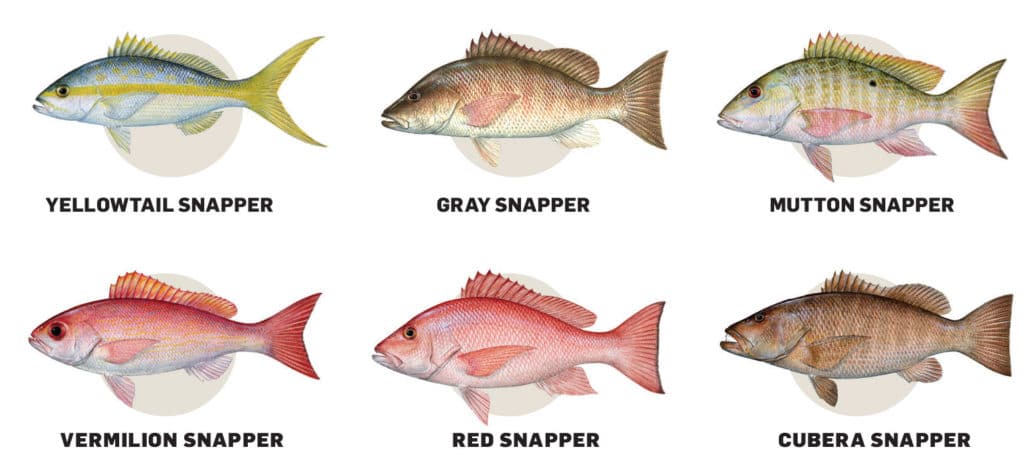
Vermilion Snapper
Commonly known as mingos and beeliners, vermilion snapper are found from North Carolina south to Florida, including the Gulf of Mexico, and farther south through the Bahamas and the Caribbean Sea. The maximum observed age is 26 years, and the all-tackle record is 7 pounds, 3 ounces. Fish from 2 to 5 pounds are most common.
Vermilion snapper are deep red on their sides above the lateral line, and frequently show narrow yellow lines along the lower portion of their bodies. The sides might have narrow yellow lines below the lateral line. Other distinguishing characteristics include large, red eyes, a short snout and a broadly rounded anal fin.
This snapper is abundant over reefs, and gravel and sand bottoms off the continental shelf at deeper depths. Adults form large schools, usually at middepth. Heavily weighted terminal rigs dropped rapidly to the seafloor typically bypass schooling vermilions. However, lightly weighted, double-hook rigs suspended in the water column usually result in two feisty vermilions.
Like their cousin, the yellowtail, vermilions can be drawn to the surface by chumming. Drop a weighted chum bag to the bottom and slowly work it to the surface, bringing hungry vermilions with it. Once at the surface and in a feeding frenzy, they’ll respond to just about any bait, natural or artificial.
Read Next: How to Catch Yellowtail Snapper
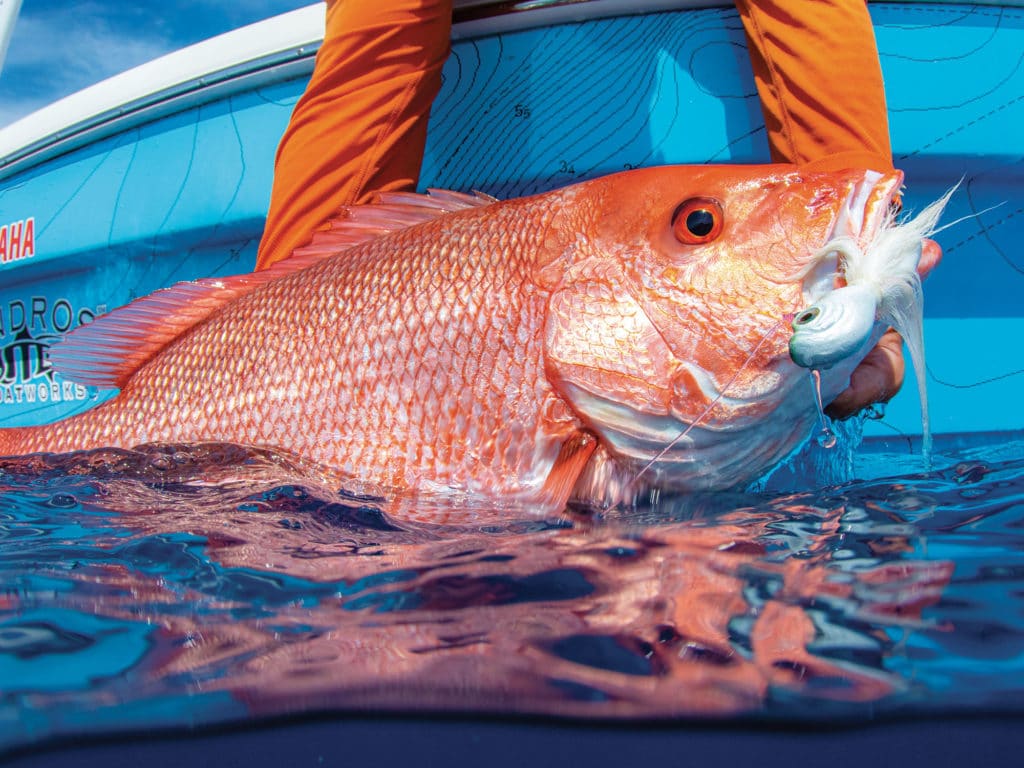
Red Snapper
One of the most highly prized saltwater species, the red snapper is found throughout the South Atlantic and Gulf of Mexico, but is absent from the Bahamas and the Caribbean. Although considered overfished, red snapper numbers have increased markedly in recent years. The maximum known age is 57, and the all-tackle record is 50 pounds, 4 ounces. Fish weighing 15 to 25 pounds are caught frequently.
As the name implies, the body and fins are reddish, with the underside showing white. At smaller sizes, red snapper feature a dark spot on the upper sides below the anterior soft dorsal fin. Other characteristics include a long and triangular snout, a sharply pointed anal fin and distinctive red eyes.
Juveniles are found offshore over sandy and muddy bottom in the same habitats as the shrimp and crabs they favor as prey. As they grow older, they move to hard structure such as ledges, wrecks and oil rigs. Adults are typically found in large schools of similar-size specimens at depths of 30 to 200 feet. Larger, older fish opt for deeper areas with generally cooler water temperatures. Once settled in an area, adult red snapper exhibit limited movement other than that necessary for spawning and finding suitable water temperatures.
Whole squid and fish—live, dead or belly strips—pinned on circle hooks and fished with a still or slow-moving presentation catch a lot of big red snapper, called sows. Preferred baits vary regionally, with everything from Boston mackerel to menhaden to goggle-eyes proving effective. Diamond and hair jigs, heavy spoons and soft-plastics also draw strikes from hungry reds.









